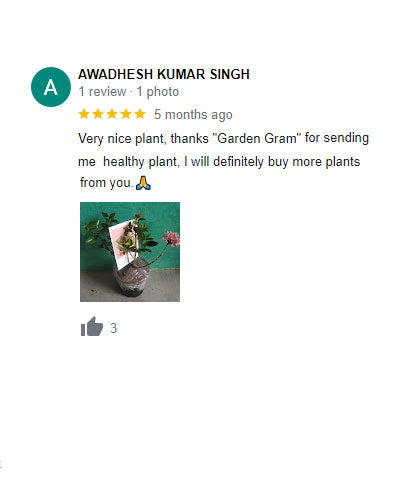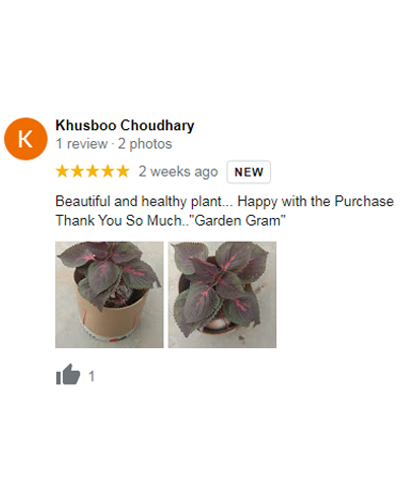Maintaining the Right Humidity for Your Indoor Plants
Welcome, plant enthusiasts! Are you ready to unlock the secret to thriving indoor greenery? Buckle up as we delve into the world of maintaining optimal humidity levels for your beloved indoor plants.
Understanding the Importance of Humidity for Indoor Plants
Hey, have you ever wondered why some plants seem to flourish effortlessly while others struggle? Well, humidity holds the key. Picture this: just like we humans crave a cozy environment, our leafy pals crave the right moisture in the air to thrive.
The Basics of Humidity
Humidity is essentially a measure of how much moisture or water vapor is present in the air. When we talk about indoor plants, humidity is a key player in their well-being. Picture it as the invisible moisture blanket surrounding your green pals.
What is Humidity and How Does it Impact Indoor Plants?
Humidity plays a crucial role in the life of indoor plants. You can think of it as a vital factor that determines how much water plants can absorb from the air. Plants absorb moisture not just through their roots but also through tiny pores in their leaves known as stomata. Humidity affects this process directly, influencing their ability to retain water and perform essential functions like photosynthesis and transpiration.
Ideal Humidity Levels for Different Types of Indoor Plants
Plants are as diverse in their humidity needs as they are in their appearances. Tropical plants, accustomed to humid rainforests, generally thrive in higher humidity, while desert dwellers like cacti prefer drier conditions.
For instance, ferns and orchids adore moisture-rich air, thriving in humidity levels typically above 50%. On the other hand, succulents and certain types of cacti are more content in drier atmospheres, where humidity levels might hover around 40% or lower.
Understanding and maintaining these varying humidity preferences can significantly impact the health and growth of your indoor plants. It's like tailoring the perfect environment for each of your green companions, ensuring they feel right at home and flourish to their fullest potential.
Signs of Incorrect Humidity Levels:
Humidity plays a vital role in their well-being, and knowing the signs of incorrect humidity levels can be a game-changer for maintaining their health.
Recognizing Symptoms of High Humidity in Plants
High humidity, much like an overly humid day for us, can leave your plants feeling a bit soggy and miserable. Keep a sharp eye out for indicators that your indoor greenery might be experiencing a humidity overload:
Moldy Soil or Growth: Excessive moisture can create a breeding ground for mold on the soil surface. If you spot any fuzzy, white, or black patches on the soil, it's likely a sign of high humidity.
Fungal Diseases: Plants in high humidity environments are more susceptible to fungal diseases. Watch out for any strange discoloration, spots, or abnormal growth on your plant's leaves or stems.
Wilting Leaves: Oddly, plants drowning in high humidity might also show signs of wilting. If you notice leaves that are unusually limp or drooping, it could indicate an imbalance in humidity levels.
Stunted Growth: Excessive moisture in the air can hinder a plant's ability to properly absorb nutrients and oxygen, potentially resulting in stunted growth or development.
Identifying Signs of Low Humidity Stress in Indoor Plants

On the flip side, when the air lacks sufficient moisture, your plants might be in need of a humidity boost. Here's what to watch out for if your indoor green buddies are experiencing low-humidity stress:
Dry, Crispy Leaf Edges: Low humidity can cause the edges of your plant's leaves to become dry and crispy. They might start curling or developing brown edges due to the lack of moisture.
Leaf Drop or Wilted Appearance: If your plant is shedding leaves excessively or appears generally wilted, it could be a sign of inadequate humidity. This occurs as the plant struggles to retain moisture.
Stalled Growth: Insufficient humidity can slow down your plant's growth rate. If you notice that your plant isn't growing as expected or seems to have stalled in its development, it might be due to low humidity levels.
Increased Pest Susceptibility: Low humidity weakens plants' natural defenses, making them more susceptible to pest infestations such as spider mites or mealybugs.
Methods to Measure Humidity
Tools and Devices for Monitoring Indoor Humidity Levels
Hygrometers: These nifty gadgets are like the weather forecasters for your indoor space. They measure and display the humidity level in the air. Some even come with additional features like temperature readings, helping you keep an eye on the overall climate your plants are living in.
Moisture Meters: Though primarily used to measure soil moisture, certain moisture meters come with an additional function to measure the humidity in the surrounding air. These can be a handy 2-in-1 tool for your indoor gardening arsenal.
Digital Indoor Thermometers with Hygrometers: Combo devices that provide both temperature and humidity readings. They're usually easy to read and offer a quick glance at the overall climate of your space.
Analog Hygrometers: Classic, analog hygrometers are often reliable and come in various designs, from simple dial-faced models to more ornate versions. They add a touch of vintage charm to your indoor garden while giving you humidity insights.
Smart Home Sensors: In the age of smart homes, you can get sensors that sync with your smartphone or home assistant devices. These sensors offer real-time updates and sometimes even suggest optimal humidity levels based on plant needs.
DIY Techniques for Assessing Humidity Around Indoor Plants
The Ice Cube Test: It's as straightforward as it sounds. Place a few ice cubes on the tray with your plants. As they melt, they release moisture, and observing how long it takes for them to melt or the moisture they produce can give you a rough estimate of the humidity around your plants.
Condensation Observation: Keep an eye on the condensation forming on your windows. While excessive condensation might indicate high humidity, lack of condensation might suggest drier air. It's a simple yet insightful method.
Hair Hygrometer: Yes, you read that right! Take a few strands of hair and lay them across a glass of water for about an hour. If the hair becomes straight, the air is dry; if it curls, the humidity is higher. It might sound odd, but it's surprisingly effective.
DIY Humidity Chart: Create your own humidity chart by observing how your plants respond to the environment. Monitor their appearance and growth in different humidity conditions, and you'll start to recognize the patterns.
These methods might not be as precise as using dedicated tools, but they offer a good starting point to gauge the humidity levels around your indoor plants without breaking the bank.
Increasing Humidity for Indoor Plants
Natural Methods to Raise Humidity Levels in Your Home
Fancy some natural hacks? Placing water-filled trays with pebbles under plant pots or grouping plants together creates a mini-humid zone. It's like a spa day for your plants!
Using Humidifiers and Misting Techniques to Boost Moisture
For a more high-tech solution, humidifiers can be your plant's best friend. If that's not your jam, a gentle misting can give your plant buddies that refreshing shower they love.
Decreasing Humidity for Indoor Plants
Strategies to Reduce Humidity in Environments with Excessive Moisture
Ventilation is key! Making sure your space gets a good airflow or using dehumidifiers can help dial down excess moisture. It's like giving your plants a breath of fresh air.
Ventilation and Airflow Tips to Combat High Humidity Around Plants
Is high humidity causing trouble? Let's get those fans going or crack open a window to help dry things out. Sometimes, a little breeze can work wonders.
Plant-Specific Humidity Care
Plants are as diverse as the people who care for them, and when it comes to humidity, they have their own unique preferences. Let's dive into the world of plant-specific humidity care, where tailoring the moisture levels becomes an art form to keep your indoor green friends healthy and happy.
Humidity Preferences for Popular Indoor Plants (e.g., Ferns, Orchids, Succulents)
Ferns, with their delicate fronds, often hail from tropical regions, thriving in high-humidity environments. A humidity range between 50-80% keeps them feeling right at home. Orchids, the elegant beauties, appreciate slightly less humidity than ferns but still enjoy a humidity range of around 40-60%. Then we have the desert darlings, succulents, and cacti. They prefer lower humidity, around 30-40%, mimicking their native arid habitats.
Tailoring Humidity Levels to Suit Different Plant Species
Creating microclimates or dedicated spaces for certain plants can work wonders. For instance, grouping high-humidity plants together can increase the moisture in that area, keeping them content. On the flip side, placing low-humidity lovers in drier spots or using a dehumidifier can cater to their needs.
Humidity Adjustments During Seasons
Alright, let's talk about how the seasons can throw a curveball in the humidity game for your indoor plants. Just like we switch up our wardrobes with the changing weather, our plant pals need adjustments in humidity levels to thrive through different seasons.
Winter brings dry indoor conditions. Use humidifiers or trays with water to create moisture. Avoid drafts for plants near windows.
Summer can be muggy. Ensure good airflow with fans and open windows. Keep plants away from direct AC drafts.
Transitional seasons like spring and fall need gradual adjustments. Monitor humidity changes and water accordingly. Finding the balance ensures your plants thrive all year.
Frequently Asked Questions (FAQ):
1. What should humidity be for plants?
The ideal humidity for plants varies based on the species. However, generally, most indoor plants thrive in a relative humidity range of 40% to 60%. Tropical plants prefer higher humidity levels, around 60% to 80%, while desert plants, like cacti and succulents, do well in lower humidity, around 30% to 40%.
2. How do you humidify plants?
Humidifying plants can be achieved in several ways. Grouping plants creates a microclimate of increased humidity among them. Using a humidifier in the room can effectively raise humidity levels. Placing trays with water and pebbles under plant pots helps elevate surrounding moisture. Misting plants with water regularly can simulate a humid environment.
3. How can I naturally humidify my home?
Natural methods to humidify your home include keeping a bowl of water near heat sources, allowing it to evaporate into the air. Using houseplants themselves as natural humidifiers, as they release moisture through transpiration. Creating a "humidity tray" by placing water and pebbles in a tray beneath indoor plants. Opening bathroom doors while showering to let the steam spread through the house.
Maintaining the ideal humidity levels for your indoor plants isn't just about creating a pleasant environment; it's about ensuring they thrive and brighten up your space. Remember, it's all about understanding how humidity affects your indoor plants. Keep an eye on those signs – wilting leaves, moldy soil, or crispy foliage – they're telling you something! Ready to level up your indoor gardening game? Take that step towards becoming a humidity hero for your beloved plants! Start by assessing your indoor plant's humidity needs today. Measure, adjust, and watch them thrive! Your green buddies will thank you with a burst of life and beauty. So, let's dive in and create a paradise for our indoor plant pals together!













